 April 8, 2021 John E. Ross, KD8IDJ, Editor
| ||||||
Florida Emergency Communications Exercise Combines Hams, Agencies, State, and NGOs A 2-hour emergency communications exercise on March 19 in Florida was deemed "wildly successful," while resulting in 21 specific suggestions for improvement of issues recognized. Sponsored by Florida Baptist Disaster Relief, a non-governmental (NGO) "served organization," the exercise simulated a combined disaster of multiple tornadoes crossing north-central Florida closely followed by a terrorist Pop-up situations, called "injects" by event planners, simulated multiple dire situations and hinted at even larger attacks, designed to create possible rumor issues. Multiple counties arranged for volunteers to help with the simulation, working in shelters and transmitting status reports of individualized disaster scenarios to county emergency operations centers (EOCs). Volunteers directed by actual or simulated EOC officials aggregated situational awareness and formulated status and resource request messages, sent by voice or digital mode to a volunteer from the actual Florida agency that handles disaster communications. Appropriate responses were sent back by radio. The exercise picked up additional support from multiple out-of-state volunteers, who relayed traffic from voice to email and vice versa. Amateur radio also conveyed simulated outbound welfare messages from survivors in stricken cities and counties.
All told, 431 messages zipped through the airwaves within the 2-hour simulation, including 53 to the state and 31 replies. Messages were passed using digital email or radiogram. Two of the seven exercise goals addressed interoperability between agencies and volunteers. Agency emergency management and communications groups participating included Florida Division of Emergency Management, Florida Baptist Disaster Relief, the federal SHARES Southeast Regional Net, Alachua, Columbia, Flagler, Madison, and Taylor Counties, as well as Homestead City. Volunteer communications groups included the Northern Florida ARES Net, Northern Florida Phone Net, North Florida Phone Traffic Net, and ARES® groups from Alachua, Columbia, Flagler, Madison, Marion, Santa Rosa, Suwanee, and Volusia Counties. Madison corralled volunteers from several surrounding counties to expand situational awareness.
Exercise planning was carried out as much as possible in accordance with DHS Homeland Security Exercise Evaluation Program (HSEEP) protocols. Post-exercise feedback -- both through a 1-hour Zoom "hotwash" session and an anonymous feedback form -- were very positive and also suggested possible improvements. All are included in the detailed and candid After-Action Report/Improvement Plan. IARU and CEPT Nudge WRC-23 Preparations Forward The International Amateur Radio Union (IARU) continued preparing for World Radiocommunication Conference 2023 (WRC-23) by attending the second meeting of the European Conference of Postal and Telecommunications Administrations (CEPT) Conference Preparatory Group (CPG) Project Team A on March 23 - 25. IARU Region 1 Spectrum Affairs Chair Barry Lewis, G4SJH, said that Project Team A develops the CEPT WRC briefs for several WRC scientific and IARU put forward its agreed preliminary positions for these agenda items at the meeting. Lewis said IARU's overall objective is to safeguard the allocations to the Amateur and Amateur Satellite Services in co-located and adjacent frequency bands within the scope of each agenda item. The CEPT briefs include a special section in which the views of all recognized international and regional organizations can be placed, and IARU's views are now in this section of the draft briefs for each of these agenda items:
The IARU Spectrum and Regulatory Liaison Committee (SRLC) continues to be active in Project Team A and in all CEPT project teams dealing with WRC-23 preparations. CEPT Conference Preparatory Group Project Team A will also consider agenda item proposals to be put forward at WRC-27. CPG Project Team A meeting documents are available on the CEPT website. Visit the IARU Region 1 web page for more information on WRC-23 preparations. ARRL Podcasts Schedule
The On the Air and Eclectic Tech podcasts are sponsored by Icom. Both podcasts are available on iTunes (iOS) and Stitcher (Android), as well as on Blubrry -- On the Air | Eclectic Tech. March 2021 Volunteer Monitor Program Report The Volunteer Monitor (VM) Program is a joint initiative between ARRL and the FCC to enhance compliance in the Amateur Radio Service. The FCC delayed action on the renewal application of a General-class licensee in Quakertown, Pennsylvania, in order to review allegations of The Volunteer Monitor Coordinator issued 14 Advisory Notices. An Advisory Notice is an attempt to resolve rule violation issues informally before FCC intervention:
General Advisories were sent to operators in West Virginia, Michigan, Iowa, North Carolina, Pennsylvania, Texas, and Wisconsin concerning operation on 7.200, 3.927, and 3.860 MHz. A Good Operator Commendation was sent to a husband-and-wife team in Perryopolis, Pennsylvania, recognizing excellent net and 2-meter operations. VM representatives had two meetings with FCC officials. -- Thanks to Riley Hollingsworth, K4ZDH, Volunteer Monitor Program Administrator ARRL Learning Network Webinars Visit the ARRL Learning Network (a members-only benefit) to register, check on upcoming webinars, and to view previously recorded sessions. Finding and Fixing RFI -- Paul Cianciolo, W1VLF, on Tuesday, April 20, 2021 at 1 PM EDT (1700 UTC) Radio frequency interference (RFI) has been a problem for ham radio operators and SWLs (shortwave listeners) since the radio hobby began. Noise has gotten worse over the last 20 years or so with the advent of widespread solar power, LED lightning, grow lights, and HF Noise Mitigation -- ARRL Northwestern Division Director Mike Ritz, W7VO, on Thursday, May 6 at 3:30 PM EDT (1930 UTC) An educational seminar to help both new and experienced HF operators who find themselves plagued with noise. We'll learn what "noise" is, discuss the various noise sources, and talk about how to mitigate those noises using a variety of techniques. W1AW Antenna Farm -- W1AW Station Manager Joe Carcia, NJ1Q; Date To Be Determined Experience a bird's-eye view and description of the antennas used by W1AW for the station's scheduled transmissions and visiting operator activity. All the antennas used at W1AW are single-band Yagis. Viewers will also see the 5 GHz sector antennas that are part of W1AW's AREDN system.
These Learning Network presentations are sponsored by Icom. ARRL members may register for upcoming presentations and view previously recorded Learning Network webinars. ARRL-affiliated radio clubs may also use the recordings as presentations for club meetings, mentoring new and current hams, and discussing amateur radio topics. The ARRL Learning Network schedule is subject to change. Oklahoma SM Kevin O'Dell, N0IRW, Stepping Down; Mark Kleine, N5HZR, Appointed as Oklahoma SM Kevin O'Dell, N0IRW, Oklahoma's long-serving Section Manager (SM) -- serving two terms from 2010 to 2014 and again serving since 2016 -- has decided to step down effective April 9, 2021. Although he is stepping down as Oklahoma SM, O'Dell will continue to serve amateur radio and ARRL as a member of ARRL's Public Relations Committee. Prior to becoming SM, O'Dell served as both a Public Information Mark P. Kleine, N5HZR, a resident of Norman, Oklahoma, has been appointed to replace O'Dell as Oklahoma Section Manager effective April 9, and will serve out the balance of O'Dell's term, which extends to September 30, 2022. Kleine has been a very active member of the Oklahoma amateur radio community for many years, currently serving as an Oklahoma Assistant Section Manager, a leader of the South Canadian Amateur Radio Society (SCARS), and as President of the Central Oklahoma Radio Amateurs (CORA), a group of nine amateur radio clubs that host the Oklahoma City Hamfest "Ham Holiday." An ARRL Life Member, Kleine is also an amateur radio license class instructor and Volunteer Examiner for three different Volunteer Examiner Coordinators. ARRL Radiosport and Field Services Manager Bart Jahnke, W9JJ, made the appointment based on the recommendations of ARRL West Gulf Division Director John Robert Stratton, N5AUS; O'Dell, N0IRW; West Gulf Vice Director Lee Cooper, W5LHC, and leaders of the Oklahoma Section. Announcements
MARS is a Not Always an Obvious Resource in Emergencies The Military Auxiliary Radio System (MARS) is a US Department of Defense adjunct comprised of radio amateurs that's not always the first resource that comes to mind in an emergency, even within the military. In a recent article in SIGNAL, US Marine Corps Major Brian Kerg exhorts the brass to more fully exploit amateur radio in general, and MARS in particular, for use in times of distress. "As future threats continue to evolve, day-to-day communications architectures will become more unreliable in times of crisis," Kerg concludes. "It is imperative that joint communications planners turn to amateurs to remain experts. By building awareness of how to employ In his article, Kerg -- who does not appear to be a radio amateur -- attempts to raise the amateur radio consciousness level of military planners who are deciding how to address an emergency. He characterizes ham radio as a robust and readily available communications resource when things go south. "And they are often every bit the expert as professional military communicators and signalmen. The term 'amateur' refers not to their technical acumen but to the private, nonbusiness use of allocated radio bands by those possessing amateur radio licenses," Kerg points out. He notes that while voice communication may be the most common ham radio mode, operators are skilled at sending and receiving text, images, and data. With MARS, the Defense Department has a mechanism employing amateur radio operators who can actively support military operations. "Notably, military aircrews remain capable of using MARS phone patches through high-frequency radios when satellite communications are unavailable," he writes. Kerg says the downside is that the use of MARS "remains a largely unknown or niche capability, one that is usually stumbled upon by planners in the moment of crisis and then poorly implemented." He said awareness of MARS was not helped when the Navy and Marine Corps MARS were shuttered in 2015, leaving only Army and Air Force MARS. Military planners should focus on raising awareness of MARS and of amateur radio by making it available through training and other activities, Kerg said. Contesting could be a component. "The wide variety of annual amateur radio competitions can further incentivize military operators to improve their amateur radio skills while inevitably improving proficiency in their mission-essential tasks," he wrote. Kerg currently serves as the fleet amphibious communications officer, US Fleet Forces Command. ARISS USA Gets IRS 501(c)(3) Recognition ARISS-USA, a Maryland not-for-profit corporation, has earned recognition from the US Internal Revenue Service as a Section 501(c)(3) charitable, scientific, and educational organization. ARISS-USA is the US segment of the Amateur Radio on the International Space Station (ARISS) international working group. With this IRS determination, ARISS-USA may solicit donations and grants, and donations to ARISS-USA become tax-deductible in the US, retroactive to May 21, 2020. "The educational scope and reach of what ARISS accomplishes has grown significantly since our beginnings in 1996, said ARISS-USA Executive Director Frank Bauer, KA3HDO. "We are actively working to extend students' reach even further. This, through the pursuit of potential ARISS-USA says it will continue to promote student involvement with the astronauts on the ISS via amateur radio. Working with educational organizations, ARISS provides opportunities to inspire, engage, and educate our next generation of space explorers through STEAM (science, technology, engineering, arts, and math) activities and content. ARISS-USA will continue to collaborate with ARISS International and US sponsors, partners, and interest groups. ARISS' sponsors are NASA Space Communication and Navigation (SCaN) and the ISS National Lab (INL). Donations to ARISS-USA are tax deductible to the extent allowed by law. YOTA Announces New Three-Times-a-Year Contest "Team YOTA" of Youngsters on the Air in IARU Region 1 has announced it will sponsor a new contest, the YOTA Contest. Open to all radio amateurs, it takes place three times a year and runs for just 12 hours. YOTA said the aim is to boost on-the-air activity by younger radio amateurs and to support YOTA. The contest will take place on The opening event will be on May 22, 0800 - 1959 UTC. The other two in 2021 will be July 17, 1000 - 2159 UTC, and December 30, 1200 - 2359 UTC. YOTA has established eight different operating categories, which include sub-categories for operators age 25 and younger, but operators of all ages may participate. Covering 80, 40, 20, 15, and 10 meters, the allowable modes will be CW and SSB. The contest exchange will be the age of the participating operator. Different ages serve as score multipliers during the contest. Stations may work the same station once per band mode. Contacts between the station's own continent are worth 1 point, while working DX is worth 3 points. The most points will be achieved by working the youngest operators. "The younger the operator, the more points one will get for the QSO," YOTA said. The IARU Region 1 Youth Working Group is working with Hungary's IARU member-society MRASZ, the Hungarian Amateur Radio Society. MRASZ is providing a contest log robot, among other things. Submit Cabrillo logs only. Contest winners will be announced once logs received have been checked in the various categories. Winners will be awarded with a YOTA Contest plaque. The contest committee consists of the IARU Region 1 Youth Working Group: Philipp, DK6SP, chair; Markus, DL8GM, vice chair, and members Csaba, HA6PX, and Tomi, HA8RT. Contact the YOTA Contest Committee with any questions or further information. In Brief...
The K7RA Solar Update Tad Cook, K7RA, Seattle, reports: Sunspots were only visible on 4 days of the current reporting week -- on April 3 - 6. As a result, the average daily sunspot number declined from 11.9 last week to 6.4. Average daily solar flux also dropped from 77.4 to 73.4, and the average daily planetary A index declined from 8.9 to 6.6. Predicted solar flux for the next month is 74 on April 8; 72 on April 9 - 20; 74 on April 21 - 26; 73 on April 27 - May 1; 72 on May 2 - 5, and 70 on May 6 - 10.
In April 1989, daily sunspot numbers ranged from 134 to 161. Sunspot numbers for April 1 - 7 were 0, 0, 12, 11, 11, 11, and 0, with a mean of 6.4. 10.7-centimeter flux was 77.9, 72.1, 72.8, 70, 71.9, 73.6, and 75.7, with a mean of 73.4. Estimated planetary A indices were 8, 6, 4, 3, 5, 3, and 17, with a mean of 6.6 middle latitude A index was 8, 4, 2, 2, 5, 3, and 15, with a mean of 5.6. A comprehensive K7RA Solar Update is posted Fridays on the ARRL website. For more information concerning radio propagation, visit the ARRL Technical Information Service, read "What the Numbers Mean...," and check out K9LA's Propagation Page. A propagation bulletin archive is available. For customizable propagation charts, visit the VOACAP Online for Ham Radio website. Share your reports and observations. Just Ahead in Radiosport
Upcoming ARRL Section, State, and Division Conventions Many conventions and hamfests have been canceled or postponed due to the coronavirus pandemic. Check the calendar of canceled events on the ARRL website.
Find conventions and hamfests in your area.
ARRL -- Your One-Stop Resource for . .
Subscribe to...
Free of charge to ARRL members...
| ||||||
 attack on telecommunications, which took down large chunks of internet and telephone service.
attack on telecommunications, which took down large chunks of internet and telephone service.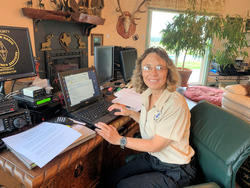
 Multiple county emergency managers injected their own specific plans and overlay exercises, as provided by the open-exercise design. Ross Merlin, WA2WDT, director of the federal SHARES program, arranged for a 60-meter interoperability channel to be made available, and leaders from the SHARES Southeast Regional Net provided coverage that resulted in formal message transfer. Florida net trainer Dave Davis, WA4WES, rounded up volunteers to staff multiple voice nets, and he supervised a PSK31 net. Northern Florida Section Emergency Coordinator Karl Martin, K4HBN, also took part.
Multiple county emergency managers injected their own specific plans and overlay exercises, as provided by the open-exercise design. Ross Merlin, WA2WDT, director of the federal SHARES program, arranged for a 60-meter interoperability channel to be made available, and leaders from the SHARES Southeast Regional Net provided coverage that resulted in formal message transfer. Florida net trainer Dave Davis, WA4WES, rounded up volunteers to staff multiple voice nets, and he supervised a PSK31 net. Northern Florida Section Emergency Coordinator Karl Martin, K4HBN, also took part..JPG) regulatory agenda items of particular interest to the amateur community. Specific attention is being paid to WRC-23 agenda items 1.12, 1.14, and 9.1a.
regulatory agenda items of particular interest to the amateur community. Specific attention is being paid to WRC-23 agenda items 1.12, 1.14, and 9.1a..jpg) The latest episode of the On the Air podcast (Episode 16) focuses on Parks on the Air (POTA), one of the most popular activities taking place in amateur radio today. We chat with Audrey Hance, KN4TMU, a relatively new ham who recently operated from Panther Creek State Park in Tennessee.
The latest episode of the On the Air podcast (Episode 16) focuses on Parks on the Air (POTA), one of the most popular activities taking place in amateur radio today. We chat with Audrey Hance, KN4TMU, a relatively new ham who recently operated from Panther Creek State Park in Tennessee. The latest edition of the Eclectic Tech podcast (Episode 31) finds the PSK31 digital mode alive and well, with many amateurs using it to rediscover the joys of real keyboard-to-keyboard conversation. Also, QST and QEX author Phil Salas, AD5X, discusses the revolution taking place in small, inexpensive vector network analyzers, or VNAs.
The latest edition of the Eclectic Tech podcast (Episode 31) finds the PSK31 digital mode alive and well, with many amateurs using it to rediscover the joys of real keyboard-to-keyboard conversation. Also, QST and QEX author Phil Salas, AD5X, discusses the revolution taking place in small, inexpensive vector network analyzers, or VNAs.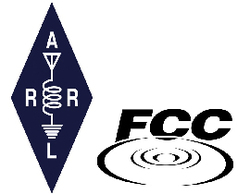 repeated transmission of obscenities and failure to properly identify.
repeated transmission of obscenities and failure to properly identify.  digital devices. Learn all about finding and fixing RFI in today's world.
digital devices. Learn all about finding and fixing RFI in today's world..jpg) Officer and as the Public Information Coordinator for the Oklahoma Section for many years.
Officer and as the Public Information Coordinator for the Oklahoma Section for many years.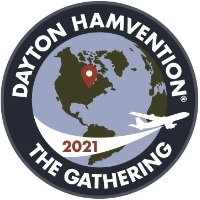 Dayton Hamvention® has information about online activities over Hamvention weekend, May 20 - 22. Visit the
Dayton Hamvention® has information about online activities over Hamvention weekend, May 20 - 22. Visit the -logo.jpg) Solar physicist Scott McIntosh of the National Center for Atmospheric Research (NCAR) will present
Solar physicist Scott McIntosh of the National Center for Atmospheric Research (NCAR) will present %20new.png) MARS and training military radio operators in ham radio technique, leaders will ensure their planners are proactively leveraging the organic amateur communications networks that abound across the globe."
MARS and training military radio operators in ham radio technique, leaders will ensure their planners are proactively leveraging the organic amateur communications networks that abound across the globe.".jpg) student opportunities on human spaceflight missions beyond low-Earth orbit, is part of our Amateur Radio Exploration (AREx) Program. First AREx destination: the moon!"
student opportunities on human spaceflight missions beyond low-Earth orbit, is part of our Amateur Radio Exploration (AREx) Program. First AREx destination: the moon!" different 12-hour windows on three Saturdays.
different 12-hour windows on three Saturdays.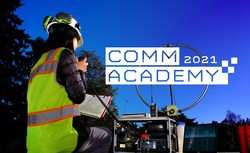 Online Comm Academy 2021 is set for April 10 - 11. The 2021 Comm Academy is 2 days of training, talks, and information on emergency communications and amateur radio. This year's theme is Disasters Here, There, and Everywhere -- Are We Ready?
Online Comm Academy 2021 is set for April 10 - 11. The 2021 Comm Academy is 2 days of training, talks, and information on emergency communications and amateur radio. This year's theme is Disasters Here, There, and Everywhere -- Are We Ready? 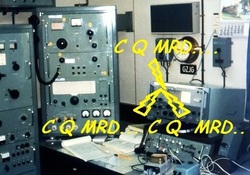 The 10th anniversary of Maritime Radio Day (
The 10th anniversary of Maritime Radio Day (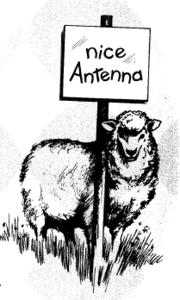 Antenna Designer Floyd Koontz, WA2WVL, of Lecanto, Florida, died on March 18. An ARRL Life Member, he was 85. Koontz may best be identified in the ham radio community with the EWE receiving antennas. EWE came from the fact that the antenna looked like an inverted U. Licensed in 1955 as WN9JQA, Koontz was an engineering graduate of Rose Hulman Institute of Technology. He was a prolific QST author, with antenna articles appearing between 1993 and 2006. He spent most of his career working for the Harris Corporation and held several antenna design patents.
Antenna Designer Floyd Koontz, WA2WVL, of Lecanto, Florida, died on March 18. An ARRL Life Member, he was 85. Koontz may best be identified in the ham radio community with the EWE receiving antennas. EWE came from the fact that the antenna looked like an inverted U. Licensed in 1955 as WN9JQA, Koontz was an engineering graduate of Rose Hulman Institute of Technology. He was a prolific QST author, with antenna articles appearing between 1993 and 2006. He spent most of his career working for the Harris Corporation and held several antenna design patents.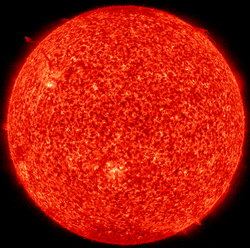 Predicted planetary A index is 10, 8, 12, and 8 on April 8 - 11; 5 on April 12 - 15; 20, 18, 8, and 8 on April 16 - 19; 5 on April 20 - 21; 8 on April 22 - 24; 5 on April 25 - May 1; 8 on May 2 - 4, and 5 on May 5 - 12.
Predicted planetary A index is 10, 8, 12, and 8 on April 8 - 11; 5 on April 12 - 15; 20, 18, 8, and 8 on April 16 - 19; 5 on April 20 - 21; 8 on April 22 - 24; 5 on April 25 - May 1; 8 on May 2 - 4, and 5 on May 5 - 12.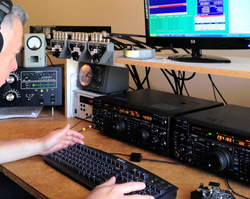 April 10 - 11 -- Nebraska QSO Party (CW, phone)
April 10 - 11 -- Nebraska QSO Party (CW, phone).jpg)








